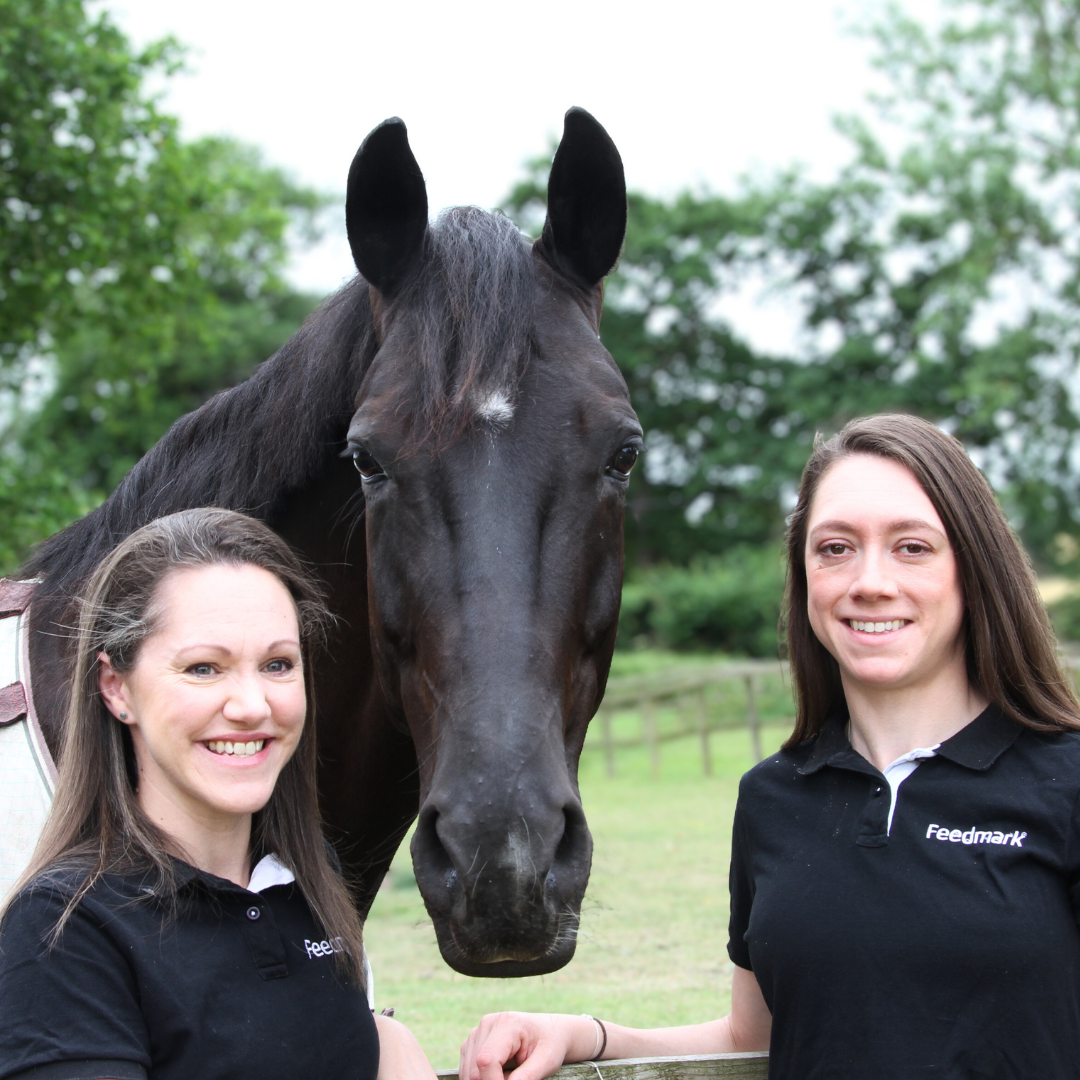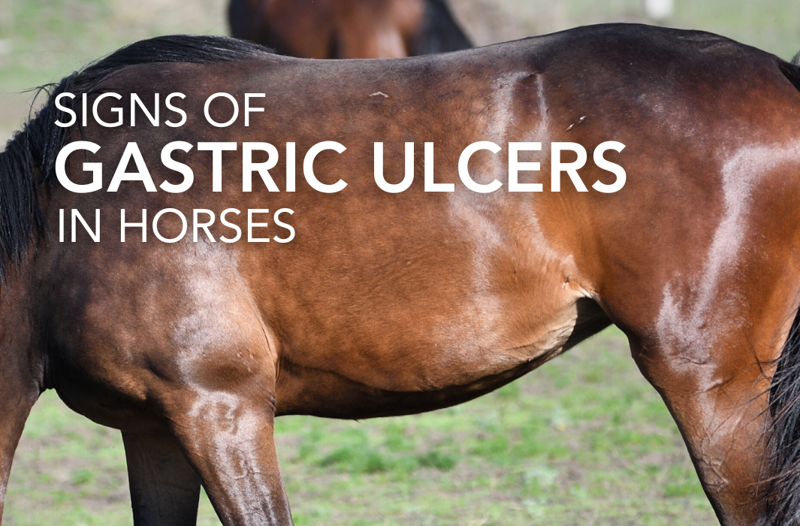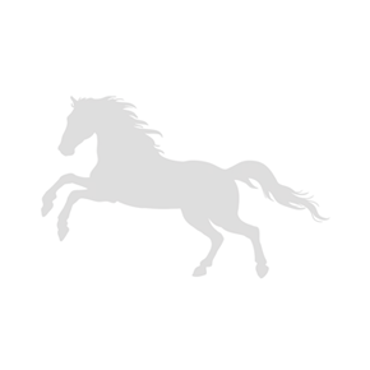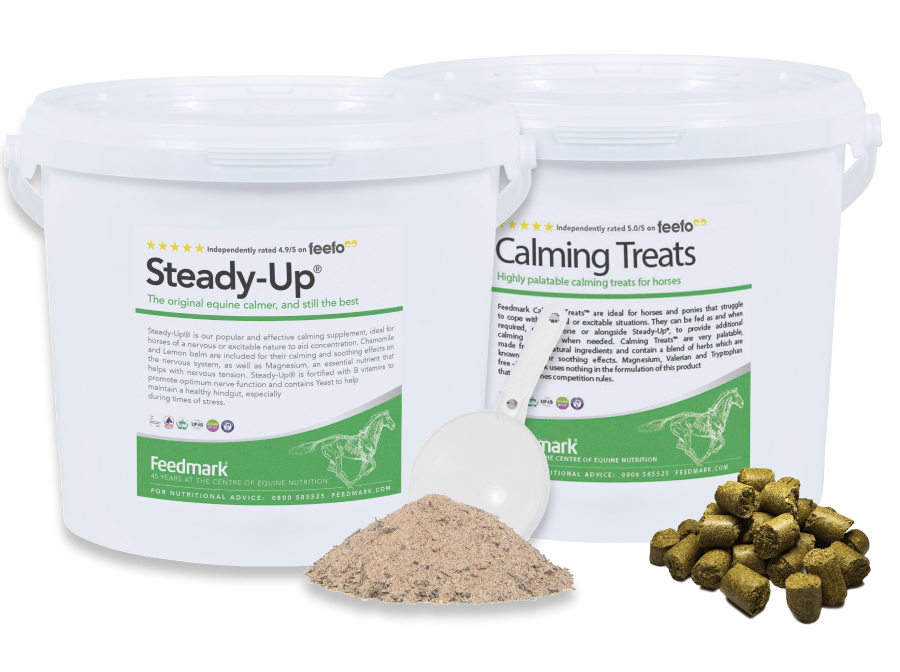With gastric ulcers being a prevalent issue and often causing significant pain and discomfort for the horse, it is important to know the signs and symptoms. However, many horses do not present with clinical signs and even when observed they are often quite subtle.
Common signs of gastric ulcers in horses:
1. Poor appetite and weight loss
Food entering the stomach irritates the ulcers and causes discomfort. As the horse eats less, they will be in an energy deficit and lose weight
2. Poor body condition and coat changes
Chronic pain may increase metabolic rate, further increasing an energy deficit, and reduce absorption of both macro and micronutrients in the intestine.
3. Discomfort when tacking up or grooming around the girth and loins
Pain in the stomach region radiates outwards, causing further pain when grooming, placing the weight of the saddle on the back, or tightening the girth.
4. Reluctance to go forward under saddle
As exercise causes the stomach acid to splash up from the glandular region of the stomach to the less well-protected squamous region, this can irritate ulcers in the upper portions of the stomach.
5. Decreased performance
Poor nutritional status independently decreases performance, as can pain and discomfort, especially as movement may be restricted in an effort to avoid further pain.
6. Behaviour changes such as increased aggression and nervousness
Psychological stress can be a factor in ulcer risk, which can be displayed as aggression and nervousness. If a horse is anticipating pain when being groomed or tacked up they may also exhibit aggression or nervousness.
7. Frequent stretching out as if to urinate
Stretching can be an attempt to relieve pressure and discomfort in the abdominal cavity.
8. Repeated episodes of colic
Ulcers may impact the motility of the gut, leading to colic symptoms.
How to diagnose gastric ulcers in horses
With or without outward clinical signs, the only way to accurately diagnose ulcers in horses is through a gastroscopy by a vet. A treatment plan based on the severity of the ulcers can then be put in place by your vet, along with appropriate management strategies to prevent reoccurrence.
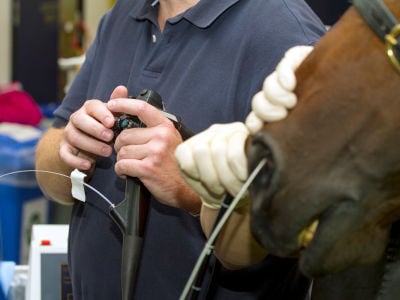
How to tell if your horse has hind gut ulcers
Hind gut ulceration remains a topic of much debate. High starch diets are thought to be the main culprit. High starch diets can overwhelm the stomach and small intestine, where it would usually be absorbed, and travel through to the hind gut. Here it is rapidly fermented by the bacteria that make up the gut microbiota, a by-product of which is lactic acid. The resulting drop in pH of the hindgut erodes the epithelial lining of the large intestine and colon, resulting in ulceration. However, as the hindgut cannot be scoped this is hard to prove, with vets instead relying on ultrasound and blood work to make an educated guess as to the presence or absence of ulcers.
Preventing gastric ulcers in horses
In any case, as the old saying goes, an ounce of prevention is worth a pound of cure when it comes to ulcers. With such a high prevalence, managing risk factors with the aim of preventing ulcer formation in the first place should be a priority as a horse owner.
The glandular region of the stomach produces acidic gastric juices on a continuous basis. As horses chew fibrous material it stimulates the production of saliva, which effectively buffers the stomach acid. As such, access to forage for the majority of any 24-hour period should form the backbone of any ulcer prevention strategy.
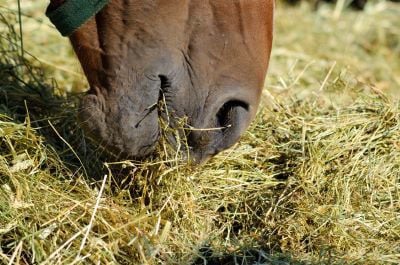
Stress has also been demonstrated to be linked to ulcer risk, particularly in the glandular region of the stomach with high levels of cortisol, one of the stress hormones, having a direct correlation with glandular ulcers. There are several theories around how high cortisol levels impact ulcer risk, but as yet no solid mechanistic data has been reported. However, reducing stress by allowing turnout time and foraging behaviours, social interaction, and keeping to a routine would be sensible from an ulcer management perspective.
Diets high in grain are also a known risk factor. A limit of 2g starch per kg body weight per meal has been proposed as a to prevent overwhelming the stomach capacity.
The pre-caecal starch digestibility should also be borne in mind when considering starch feeds. If too much starch is consumed at once, it cannot be broken down and absorbed in the small intestine but travels through to the hind gut where it is rapidly fermented by the bacteria that make up the gut microbiota. A by-product of this fermentation is lactic acid, and the subsequent drop in pH affects the whole length of the digestive tract, increasing gastric ulcer risk. Oats have the highest pre-caecal starch digestibility averaging 83% as whole oats, while the value for barley and corn starch is nearer 65%, although rolling and heat processing improve these values.
Additionally, as grains require far less chewing than forage, lower quantities of saliva to buffer the stomach acid are produced. Ensuring chaff of some kind is always provided alongside the grain feed can help increase chewing time.
As horses exercise, acid can splash up from the glandular region of the stomach to the less acid-resistant squamous region. Giving a chaff feed 20-30 minutes before exercise helps create a ‘cushion’ over the stomach acid. As the chaff will be mixed with the saliva from chewing, this cushion can be an effective way to both buffer the stomach acid and prevent splashback from occurring. Alternatively, allowing access to hay until 20-30 minutes before riding would accomplish a similar effect.
Summary
Gastric ulcers in horses are a prevalent issue with wide-ranging and often difficult to identify symptoms. Preventing their occurrence should be considered in at-risk horses through effective management strategies including;
- Stress reduction
- Adequate, regularly time-spaced forage
- Low starch diets where possible, and small feed sizes
- Feed chaff 20-30 minutes before exercise
For any advice or questions you may have, please don't hesitate to reach out to our expert nutrition team. You can call 0800 585525 Monday-Friday 8:30am-5:00pm. Email [email protected], or send us a DM on social media.

